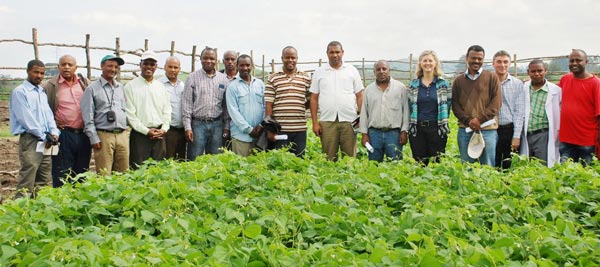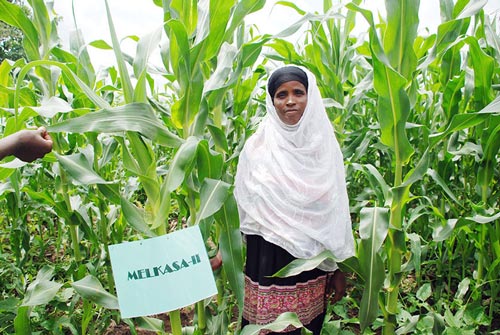 Myths and cultural practices can block farmers’ acceptance of a new technology, particularly the principles of reduced tillage, residue retention, and cropping rotations that underlie conservation agriculture. This was one observation in a recent visit to farmers in four districts in Ethiopia by Australian International Food Security Centre (AIFSC) director, Mellissa Wood, and AIFSC Biosecurity and Food Safety Manager, Dennis Bittisnich.
Myths and cultural practices can block farmers’ acceptance of a new technology, particularly the principles of reduced tillage, residue retention, and cropping rotations that underlie conservation agriculture. This was one observation in a recent visit to farmers in four districts in Ethiopia by Australian International Food Security Centre (AIFSC) director, Mellissa Wood, and AIFSC Biosecurity and Food Safety Manager, Dennis Bittisnich.
Farmers in one village who continued intensive tilling instead of conservation agriculture said that tillage helps control crop diseases. Many Ethiopian farmers also keep livestock, so crop residues have higher value as fodder for cows than as cover for soils. “Maize stover is also used as fuel for cooking fires,” said CIMMYT socioeconomist Menale Kassie, who is also regional leader for the project Adoption Pathways to Sustainable Intensification in Eastern and Southern Africa. “Understanding the constraints and incentives affecting adoption is crucial, if innovations are to be relevant for farmers.”
The four-year adoption pathways project is funded by AIFSC, managed by the Australian

Centre for International Agricultural Research (ACIAR), and led by CIMMYT, in collaboration with national universities and research institutes in Ethiopia, Kenya, Malawi, Mozambique, and Tanzania; the University of Queensland, Australia; the Norwegian University of Life Sciences; and the International Food Policy Research Institute (IFPRI).
According to Menale, the project is closely linked to the Sustainable Intensification of Maize-Legume Systems for Food Security in East and Southern Africa (SIMLESA) program; working where SIMLESA has been promoting and testing conservation agriculture using demonstrations on farms and on national agriculture research stations.
Farmers learn from their peers, particularly early adopters and those who lend their farms to showcase the practices. Fatuma, a widowed mother of 10 and an early adopter who farms with help from her children, says reducing tillage has cut her work load. She is a role model to other farmers—a rare feat for a woman, according to village sources—and neighbors have decided to try conservation agriculture after seeing Fatuma’s crops flourish.
“The project will evaluate the data and use the rich survey information to advise on potential policy and technical interventions,” said Yirga, researcher with the Ethiopian Institute of Agriculture Research (EIAR) and country coordinator for the project. Innovative livestock management and community engagement can help, according to Chilot Yirga, as can providing alternative cattle feeds such as intercropped legume fodders, which also enrich soils by fixing nitrogen. “The way to show this is through on-farm demonstrations,” said Wood, lauding the researchers for the on-station trials and on-farm engagement. “In Australia, conservation agriculture is very important as we have a lot of drought and changing rainfall patterns; CA makes us more productive.”
 Capacity development
Capacity development 
